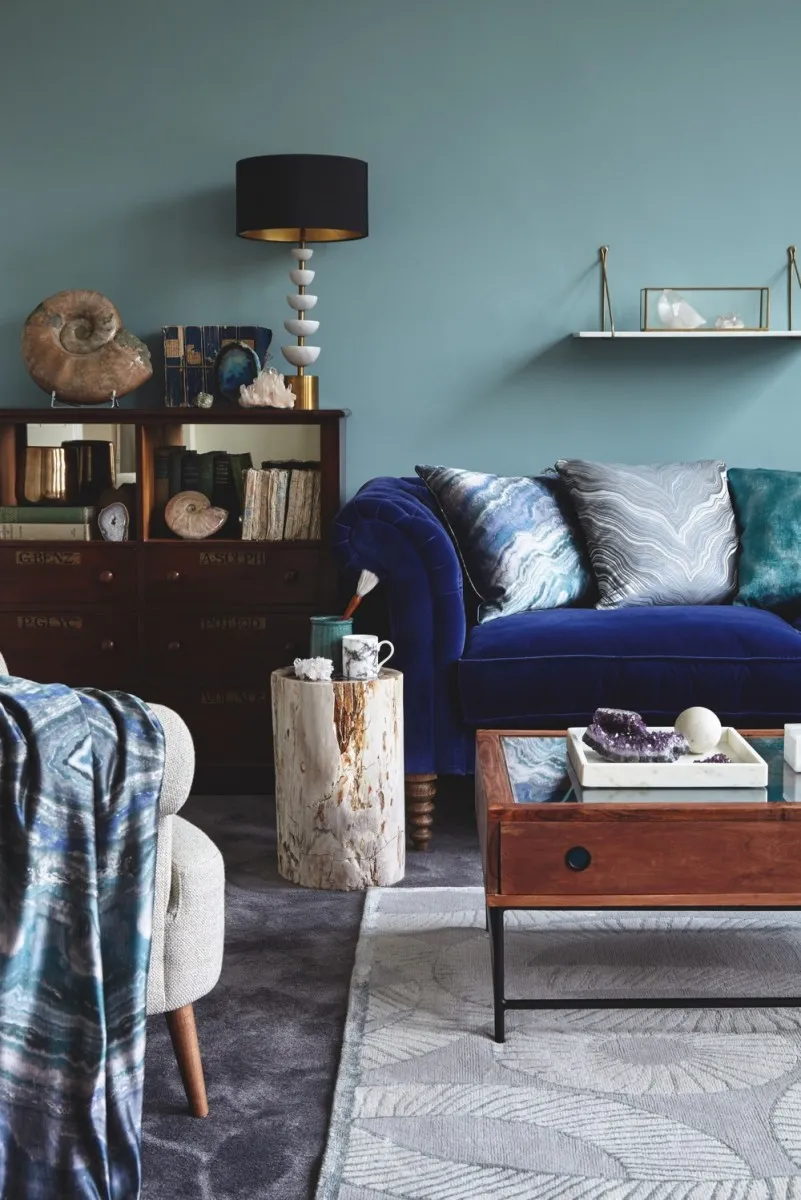As the world’s population grows our houses are getting smaller, but this isn’t necessarily something to lament. Small spaces, and indeed the quirky room shapes of larger period homes, demand a certain level of ingenuity when it comes to furnishing. As such, effective and original results in modest spots are all the more rewarding.
This is where antiques can take centre stage, as they are often perfectly proportioned to nestle into tight corners and tiny rooms, and will inject plenty of personality into the space. Furniture of old promises another boon for those limited on space: it is infinitely adaptable. Susie Atkinson, an interior designer who works with hotels and private residences, likes to place a blanket box or settle at the end of a bed to provide attractive additional storage. She also adds that, ‘Old piano stools make wonderful seats for dressing tables, and vintage drinks trolleys are great if you don’t have room for a sideboard, or can even be used in a bathroom for displaying toiletries’.
Remember that, if you do need a larger piece like a dresser or cupboard, you should make sure the area around it is clear of clutter. ‘Antiques look better if they have room to breathe,’ says Elizabeth Fell, an antiques advisor and buyer. ‘An 18th-century oak dresser makes a fabulous addition to a small modern kitchen,’ Fell suggests. ‘They are often narrow and compact, yet offer masses of space for keeping items tidy and putting them on display.’

Another idea is to use 18th-century stools as occasional tables, which offer the added benefit of doubling up as extra seating. And for those with a humble home office, ‘You can still pick up a bureau relatively inexpensively,’ Fell says. ‘They dropped out of fashion at the dawn of the computer age, but if you have a laptop, they are the perfect size for a desk. You just close the lid to hide everything when the room needs to stop being an office and return to a sitting room or bedroom. And there are plenty of pigeonholes for stationery storage.’
If you’re unsure whether to mix different periods and styles, follow the lead of Luke Edward Hall, an artist and interior designer. ‘I enjoy the proportions of Georgian cabinets and chests of drawers,’ he reveals, ‘but to stop this look from being too sensible, I’ll place a bright orange vase from the 1970s on top.’ Further wisdom from Hall includes suggesting we add plenty of mirrors to a small room. They will bounce the light around and make it feel much larger. ‘I always recommend buying antique mirrors – they have much more character than new ones and the mottled glass gives them personality.’

FIVE GOLDEN RULES TO FOLLOW
1
Be prepared
Have your measurements with you at all times when shopping - both the ideal size you would like, and also the smallest and largest that would work in the space
2
Play with scale
Better to have a couple of things that are slightly too large (and keep the rest of the room minimal) than a number of small pieces that will make a little space feel cluttered
3
Look out of items that can multitask
Items that can be used flexibly or in different rooms are ideal when you are short of space. So choose the folding card table that can seat extra dinner guests, the blanket box that can store toys or towels, or the stool that doubles up as an occasional table
4
Mix up styles
Don't be afraid of brown furniture. It can ground a scheme and world particularly well in a brightly patterned room or one with interesting wallpaper
5
Use plenty of lamps
Vintage lighting is great in modern kitchens. Try using a lamp on the worktop - it will hide the edges of a small room and make it feel cosier
Images: Retrovius, Katya de Grunwald, Cheyne Walk and Rachel Whiting
Words: Kate Watson-Smyth